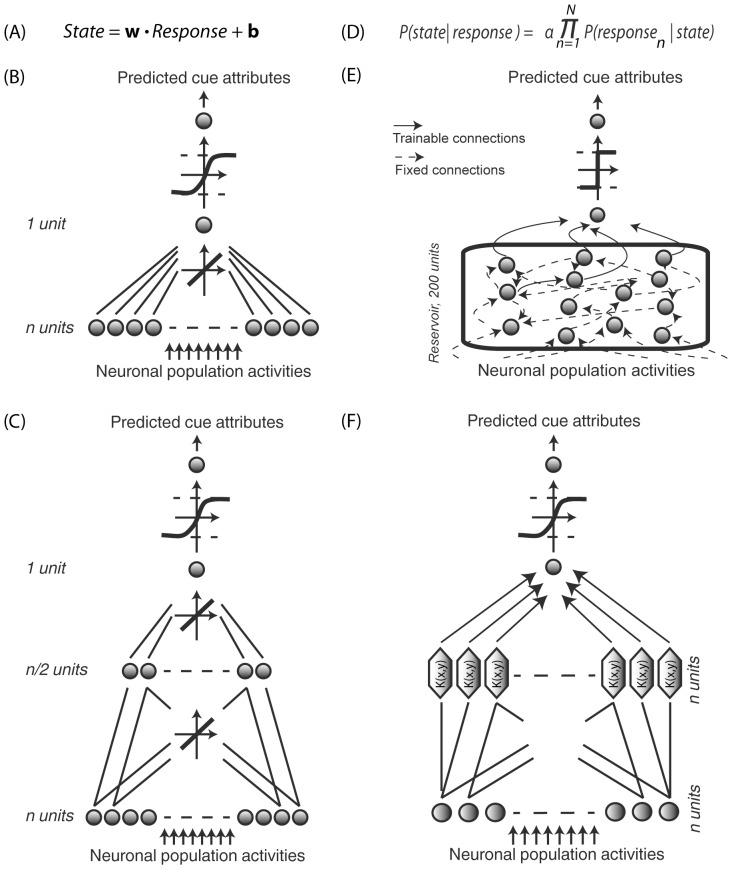Figure 2. Decoders.
(A) Regularized OLE, the training step is a simple regularized linear regression. (B) Optimal Linear Estimator (ANN OLE), implemented as a one-layer feedforward artificial neural network. The input layer has one unit per FEF cell and receives instantaneous population neuronal activities. The output layer contains 1 unit. Training involves optimizing the weights using a Levenberg-Marquardt backpropagation algorithm and a hyperbolic tangent transfer function. (C) Non-Linear Estimator (ANN NLE), implemented as a 2-layer feedforward artificial neural network. The network architecture only differs from the OLE by an additional hidden layer with n/2 units, n being equal to the number input units. (D) Bayesian decoder, applying Bayes' theorem to calculate the posterior probability that state i is being experienced given the observation of response r. (E) Reservoir decoding. The decoder has one input unit per FEF cell and one output unit. Fixed connections are indicated by dotted arrows and dynamical connections are indicated by full arrows. The reservoir contains 200 units. The recurrent connections between them are defined by the training inputs. A simple linear readout is then trained to map the reservoir state onto the desired output. (F) Support Vector Machine (SVM), the LIBSVM library (Chih-Chung Chang and Chih-Jen Lin, 2011) was used (Gaussian radial basis function kernel so as to map the training data into a higher dimensional feature space). The transformed data is then classified with a linear regressor and training is performed with a 5-fold cross-validation. For all decoders, the sign of the output corresponds to the two possible states of the variable being decoded.

